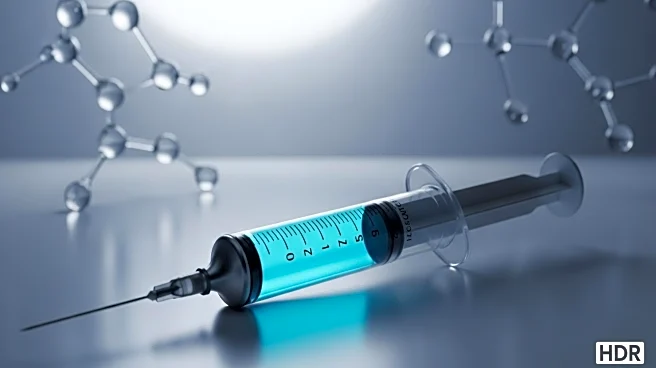What's Happening?
Ultragenyx Pharmaceuticals is making significant strides in the rare disease biotech sector, driven by a pipeline of high-impact therapies. The company is poised for several near-term catalysts, including pivotal data readouts and regulatory submissions. Key developments include UX143, an anti-sclerostin monoclonal antibody for Osteogenesis Imperfecta, which has shown promising Phase 2 results. Additionally, GTX-102 for Angelman Syndrome and DTX401 for Glycogen Storage Disease Type Ia are progressing through clinical trials, with GTX-102 receiving FDA Breakthrough Therapy Designation. Despite a regulatory hurdle with UX111 for Sanfilippo Syndrome, Ultragenyx plans to resubmit its Biologics License Application after addressing manufacturing and documentation issues.
Why It's Important?
Ultragenyx's advancements in rare disease treatments have the potential to significantly impact the biotech industry and patient care. The company's focus on high-growth, high-margin markets positions it to capture substantial market share. The Osteogenesis Imperfecta market is projected to grow, driven by therapies like UX143, while the broader red biotechnology sector is expected to expand significantly. Ultragenyx's innovative treatments could redefine standards for conditions with unmet medical needs, offering hope to patients and driving growth in the biotech sector.
What's Next?
Ultragenyx is expected to release Phase 3 data for UX143 by the end of 2025, which could lead to drug approval and redefine treatment standards for Osteogenesis Imperfecta. The company is also preparing for a Biologics License Application submission for DTX401 in Q4 2025. Investors and stakeholders will be closely monitoring these developments, as successful outcomes could catalyze a re-rating of the company's stock and further its strategic momentum.
Beyond the Headlines
The regulatory challenges faced by Ultragenyx highlight the complexities of navigating the biotech industry, particularly in rare disease therapies. The company's ability to overcome these hurdles and maintain its first-mover advantage in key markets will be crucial for its long-term success. Additionally, the high R&D costs and competitive pressures in gene therapy markets pose risks that Ultragenyx must manage to sustain its growth trajectory.











